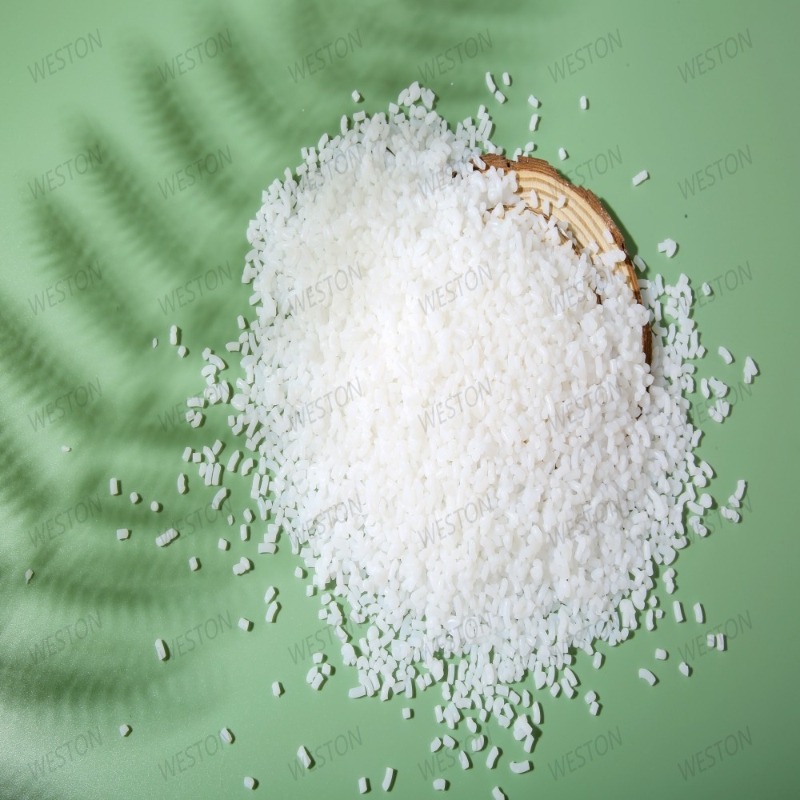-
Categories
-
Pharmaceutical Intermediates
-
Active Pharmaceutical Ingredients
-
Food Additives
- Industrial Coatings
- Agrochemicals
- Dyes and Pigments
- Surfactant
- Flavors and Fragrances
- Chemical Reagents
- Catalyst and Auxiliary
- Natural Products
- Inorganic Chemistry
-
Organic Chemistry
-
Biochemical Engineering
- Analytical Chemistry
- Cosmetic Ingredient
-
Pharmaceutical Intermediates
Promotion
ECHEMI Mall
Wholesale
Weekly Price
Exhibition
News
-
Trade Service
[application]
(1) Application in sludge dewatering
Li Yujiang and Wu Tao prepared the cationic organic flocculant CPMA with higher amine methyl degree through the amine methylation reaction of the copolymer product of starch and acrylamide , and used it for the flocculation and dewatering of sludge.
They found that CPMA can make the sludge contain water The rate is 69% from 99.
3%, and the flocculation and dehydration performance is better than cationic polyacrylamide (PAM-C) and non-ionic polyacrylamide (PAM)
.
The test results of 3 kinds of organic polymer flocculants to treat activated sludge are shown in Figure 3-21, Table 3-56 and Table 3-57 respectively
.
Table 3-56 Light transmittance of filtrate
①The dewatering performance of CPMA.
The sludge dewatering experiment is carried out under the same operating conditions.
Therefore, the volume of the filtered filtrate within a certain period of time is an intuitive indicator to compare the sludge dewatering effect.
②Filtrate clarification.
A good dewatering flocculant must not only have good dewatering performance, but also require high clarity of the filtrate.
The clarity of the filtrate can be expressed by light transmittance, which shows that the flocculant affects the sludge.
For the removal performance of medium colloidal particles, fine particles and impurity components, Table 3-56 shows the transmittance of the filtrate measured by the 751 spectrophotometer after repeated tests at the maximum absorption wavelength of 650nm
.
It can be seen from Table 3-56 that the filtrate of the sludge with CPMA as the flocculating dehydrating agent has good light transmittance and high clarity
.
CPMA has good dehydration performance and high light transmittance of the filtrate, which can be considered to be directly related to its own properties
.
The colloidal particles and microbial residues in the sludge are negatively charged, and CPMA has a high amine methyl degree and a high positive charge density.
It can not only neutralize the sludge particles, but also make the sludge fine particles.
③The moisture content and combustion heat value of sludge before and after dehydration As the filtration time continues, the volume of the filtrate gradually increases, while the moisture content of the sludge filter cake gradually decreases until the vacuum is finally broken.
At this time, the moisture content of the filter cake is vacuum The lowest water content of the filter cake that can be achieved during the dehydration process, the test results are shown in Table 3-57
.
It can be seen from Table 3-57 that the dosage of CPMA is the smallest and the moisture content of the filter cake is the lowest
.
Table 3-57 Minimum water content of filter cake
Bo and Zhao Yulin starch acrylamide graft copolymer using a Mannich reaction product of municipal wastewater treatment sludge, found:.
A selected relative molecular mass 10 × 500 .
4 about the ideal flocculants, flocculants of this time most The best dosage is 30mg/L; b.
Yang Bo and others also used cationic starch acrylamide graft copolymers to dehydrate activated sludge, and investigated the treatment effect, and found the following situations
.
①The amount of flocculant reaches a certain peak value, and the moisture content of dewatered sludge is the lowest
.
When the dosage is increased again, the effect of the flocculant decreases.
This is because the dosage continues to increase, and the ion surface adsorption active points necessary for the bridging effect are wrapped by the flocculant, which makes bridging difficult and reduces the treatment efficiency
②The influence of cationic degree on the moisture content of dewatered sludge.
③Copolymers with high grafting rate have better flocculation effect than copolymers with low grafting rate.







